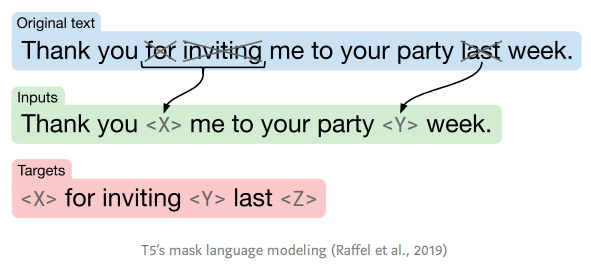license: apache-2.0
language:
- en
- es
- fr
- it
widget:
- text: The best cough medicine is <extra_id_0> because <extra_id_1>
- text: El mejor medicamento para la tos es <extra_id_0> porque <extra_id_1>
- text: Le meilleur médicament contre la toux est <extra_id_0> car <extra_id_1
- text: La migliore medicina per la tosse è la <extra_id_0> perché la <extra_id_1
library_name: transformers
pipeline_tag: text2text-generation
tags:
- medical
- multilingual
- medic

MedMT5: An Open-Source Multilingual Text-to-Text LLM for The Medical Domain
Model Card for MedMT5-large
We present MedMT5, the first open-source text-to-text multilingual model for the medical domain. MedMT5 is an encoder-decoder model developed by continuing the training of publicly available mT5 checkpoints on medical domain data for English, Spanish, French, and Italian.
- 📖 Paper: Coming soon
- 🌐 Project Website: https://univ-cotedazur.eu/antidote
| MedMT5-Large (HiTZ/Medical-mT5-large) | MedMT5-XL (HiTZ/Medical-mT5-xl) | |
|---|---|---|
| Param. no. | 738M | 3B |
| Sequence Length | 1024 | 480 |
| Token/step | 65536 | 30720 |
| Epochs | 1 | 1 |
| Total Tokens | 4.5B | 4.5B |
| Optimizer | Adafactor | Adafactor |
| LR | 0.001 | 0.001 |
| Scheduler | Constant | Constant |
| Hardware | 4xA100 | 4xA100 |
| Time (h) | 10.5 | 20.5 |
| CO2eq (kg) | 2.9 | 5.6 |
Model Description
- Developed by: Iker García-Ferrero, Rodrigo Agerri, Aitziber Atutxa Salazar, Elena Cabrio, Iker de la Iglesia, Alberto Lavelli, Bernardo Magnini, Benjamin Molinet, Johana Ramirez-Romero, German Rigau, Jose Maria Villa-Gonzalez, Serena Villata and Andrea Zaninello
- Contact: Iker García-Ferrero
- Website: https://univ-cotedazur.eu/antidote
- Funding: CHIST-ERA XAI 2019 call. Antidote (PCI2020-120717-2) funded by MCIN/AEI /10.13039/501100011033 and by European Union NextGenerationEU/PRTR
- Model type: text2text-generation
- Language(s) (NLP): English, Spanish, French, Italian
- License: apache-2.0
- Finetuned from model: MT5
How to Get Started with the Model
You can load the model using
from transformers import AutoTokenizer, AutoModelForSeq2SeqLM
tokenizer = AutoTokenizer.from_pretrained("HiTZ/Medical-mT5-large")
model = AutoModelForSeq2SeqLM.from_pretrained("HiTZ/Medical-mT5-large")
The model has been trained using the T5 masked language modeling tasks. You need to finetune the model for your task.

MedMT5 for Sequence Labelling
If you want to use MedMT5 for Sequence Labeling, we recommend you use this code: https://github.com/ikergarcia1996/Sequence-Labeling-LLMs
Training Data
| Language | Source | Words |
|---|---|---|
| English | ClinicalTrials | 127.4M |
| EMEA | 12M | |
| PubMed | 968.4M | |
| Spanish | EMEA | 13.6M |
| PubMed | 8.4M | |
| Medical Crawler | 918M | |
| SPACC | 350K | |
| UFAL | 10.5M | |
| WikiMed | 5.2M | |
| French | PubMed | 1.4M |
| Science Direct | 15.2M | |
| Wikipedia - Médecine | 5M | |
| EDP | 48K | |
| Google Patents | 654M | |
| Italian | Medical Commoncrawl - IT | 67M |
| Drug instructions | 30.5M | |
| Wikipedia - Medicina | 13.3M | |
| E3C Corpus - IT | 11.6M | |
| Medicine descriptions | 6.3M | |
| Medical theses | 5.8M | |
| Medical websites | 4M | |
| PubMed | 2.3M | |
| Supplement description | 1.3M | |
| Medical notes | 975K | |
| Pathologies | 157K | |
| Medical test simulations | 26K | |
| Clinical cases | 20K |
Evaluation
Single-task supervised F1 scores for Sequence Labelling

Multi-task supervised F1 scores for Sequence Labelling

Zero-shot F1 scores for Argument Mining. Models have been trained in English and evaluated in Spanish, French and Italian.

Ethical Statement
Our research in developing MedMT5, a multilingual text-to-text model for the medical domain, has ethical implications that we acknowledge. Firstly, the broader impact of this work lies in its potential to improve medical communication and understanding across languages, which can enhance healthcare access and quality for diverse linguistic communities. However, it also raises ethical considerations related to privacy and data security. To create our multilingual corpus, we have taken measures to anonymize and protect sensitive patient information, adhering to data protection regulations in each language's jurisdiction or deriving our data from sources that explicitly address this issue in line with privacy and safety regulations and guidelines. Furthermore, we are committed to transparency and fairness in our model's development and evaluation. We have worked to ensure that our benchmarks are representative and unbiased, and we will continue to monitor and address any potential biases in the future. Finally, we emphasize our commitment to open source by making our data, code, and models publicly available, with the aim of promoting collaboration within the research community.